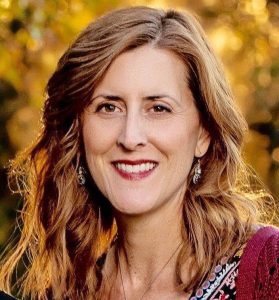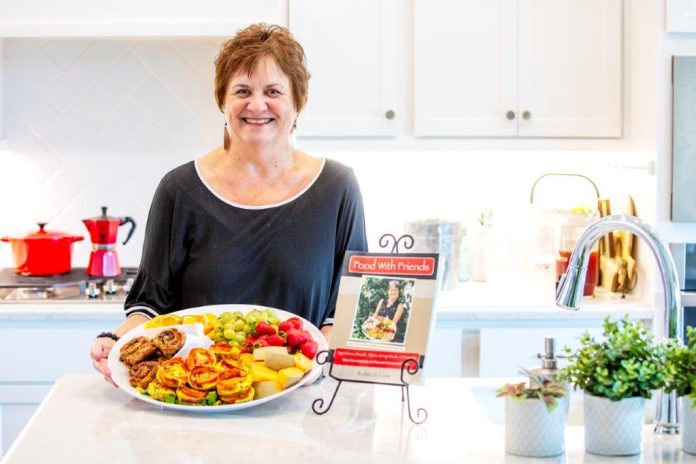There’s currently no cure for the debilitating disease Erin Barnes has. And yet, she doesn’t take any medication, does not need life-altering surgeries or specialized treatment, and rarely experiences symptoms painful enough to disrupt her otherwise normal life as a loving wife and mother of three children.
And it’s all because of one all-or-nothing lifestyle choice she and her mother, Robin Cox, made 21 years ago that is now both a rallying cry and a cure in its own right for millions of people desperate to overcome a similar diagnosis.
“We feel like we found this cure, and a lot of people don’t know about it yet,” Erin said. “We’re giving them a starting place.”

Erin, 43, was diagnosed with Crohn’s disease when she was 22.
Crohn’s is a chronic inflammatory bowel disease that affects the lining of the digestive tract and can sometimes cause life-threatening complications ranging from abdominal pain and diarrhea to excessive weight loss, anemia, and uncontrollable fatigue. For many people, these symptoms never go away and are simply managed — sometimes to no avail — through steroids, immunosuppressants, surgeries, and constant efforts to figure out on their own with little guidance what foods bother them less than others.
Erin and Robin’s answer is the Specific Carbohydrate Diet (SCD), a gluten-free, grain-free, lactose-free, and refined sugar-free diet they promise is easier to incorporate than it sounds. More importantly, it has successfully treated Erin’s Crohn’s disease without medications or surgeries. The diet is the catalyst behind their website, NoMoreCrohns.com, a bottomless hub for information on the diet, recipes, weekly menus, restaurant guides, recent research, courses and cookbooks, success stories, travel tips, support, and more.
And the best part — they’re doing it while living in separate states. Robin lives in south Denton, while Erin lives in Colorado.
“There is no cure for Crohn’s, but it’s all about feeling like you have control,” Erin said. She added that the SCD boasts an 80% success rate in people who exclusively follow the diet and has been proven to treat ulcerative colitis, celiac disease, diverticulitis, colitis, autism, and IBS.
“In my case, I can make decisions that make sense for me, and my mom has been by my side the entire time. It’s been amazing to see what we can do together. She does the website, and I answer questions and counsel people. That support is crucial because following the diet is a lifestyle change where support can make all the difference.”
Robin agreed, adding that her daughter is proof that living a healthy and full life is possible despite Crohn’s.
“The website is another connection we have together, and it’s fun,” Robin said. “Erin loves advising people. She has lived this life, so she knows all the questions and answers, and she’s very compassionate and thorough in her answers. We have fun with it. In fact, when we see each other next, we plan to do an entire video series on how she meal preps throughout the week.”
This dynamic duo is extremely transparent about their journey and admits there has been plenty of trial and error.
Erin’s journey started in 2001 with severe pain, stomach problems, and a low-grade fever. One Friday morning, she woke up doubled over in pain and was rushed to the emergency room as her temperature soared to 104. Erin stayed there for 10 days as doctors ran a battery of tests for every imaginable illness. Her white blood cell count skyrocketed in that short time, indicating a serious infection. She was eventually diagnosed with Crohn’s disease and lost nearly 10 pounds.
She was given a huge bag of pills to take home and was told to eat a “bland diet.” In other words, no spicy foods and no fibrous fruits or vegetables — mainly white potatoes, white bread, rice, and anything else that wouldn’t irritate her digestive system.
“I remember asking the nurse, ‘OK, but what do I do for nutrients?’ And her response was, ‘I don’t know,’” Erin said with a laugh. “It was just the worst possible answer, and I kept thinking, ‘There’s something wrong here. What do I actually eat?’”
Robin said that by the time she and her husband took Erin home, their daughter was petrified to eat anything.
“Initially, I was just glad that we finally had a diagnosis,” Robin said. “But it wasn’t good, either. I’m the type of person who likes to solve things, but I honestly didn’t know what we were going to do. I studied everything I could, and as a parent, I was scared.”
By the grace of God, an acquaintance from church had heard about Erin’s diagnosis and showed up on their front porch one day with a book titled, “Breaking the Vicious Cycle: Intestinal Health Through Diet” by Elaine Gottschall MS.
“She said, ‘There’s real hope in this book,’” Robin said. “I tried to read it and couldn’t understand it. But Erin read it, and it immediately made sense to her. She told me, ‘I don’t want to eat a bite of anything that’s not on this diet.’ And I said, ‘OK. Well, I’m going to be your helper, and we’re going to figure this out together.’”
In simple terms, the Specific Carbohydrate Diet was designed to starve out the intestinal bacteria that cause many kinds of pain and inflammatory bowel diseases. These bad bacteria thrive on starches and certain sugars. So if the food source is eliminated, then the disease can’t cause pain. Although the SCD sounds similar to a no-carb or low-carb diet, it is distinctly different because the goal is to eliminate all long-chain carbohydrates, Erin said.
They started by looking at the food they had in the house and then branched out from there. They tried to create meal ideas and naturally made mistakes along the way. But they always felt like they were headed in the right direction.
“I went to my six-week checkup with the doctor and had already gained back the weight I’d lost. When he asked me what I had been doing, I told him about the diet,” Erin said. “He said that there is no link between diet and Crohn’s, which confused me. But I just went right back to what we were doing because we knew it was working.”
She added, “That was 20 years ago, though. It’s more mainstream now, and there are studies that back everything up, which I think is good for doctors because they don’t feel like they are going out on a limb. The whole time, I kept thinking, ‘It’s worth a try.’”
Is Erin’s life more complicated now? Sure. She can’t just go to a restaurant with her family and choose anything off the menu. She has to think ahead for every scenario, especially when they travel. Whether she meal-preps it herself or not, everything she eats must be carefully scrutinized. And while that may sound overwhelming at first, it’s worth the effort if the result is a pain-free life.
Erin’s blood work has consistently come back solid after physicals, including cholesterol. She’s never felt or looked healthier, and her three pregnancies progressed perfectly as she continued to stay 100% committed to the diet.
Now she wants others to experience the same cure.
“It’s a rewarding feeling knowing that what we are doing helps people,” Erin said. “We’re hoping more people can find the diet and reach out to us if they need guidance.”
For more information on the SCD, Erin’s story, and additional resources, visit nomorecrohns.com.





 GIF.gif)












